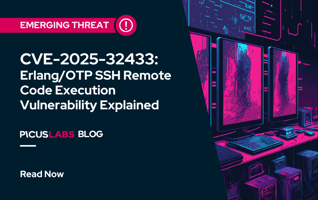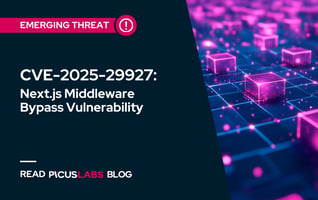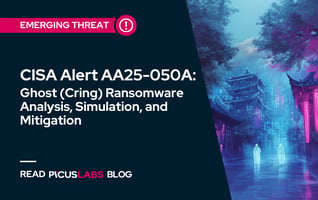Zero Trust Validation: The Role of Breach and Attack Simulation (BAS)
For decades, organizations have focused on perimeter-based security, building digital walls around their networks to block threats. This approach is often compared to protecting a castle with a moat and drawbridge, assuming that those within the perimeter walls are trusted. This model is no longer effective in today's digital world, where digital connections are interconnected and complex.
Zero Trust goes beyond simple verification. It hypothesizes that the bad guys are already on your network. This "assume breach" mindset is critical to designing a resilient security architecture. It's not about preventing every attack; it's about minimizing the impact of a breach when it happens.
Understanding the Core Principles of Zero Trust Security
Restrict Access: The Principle of Least Privilege
Zero Trust enforces the granular principle of granting users and devices only the minimum access required to perform their role or function. This reduces the damage an attacker can cause if an account is compromised.
Assume Breach: A Proactive Security Posture
Operating under the assumption that a breach has already occurred or is inevitable forces organizations to prioritize minimizing the impact. This proactive approach requires addressing potential vulnerabilities such as misconfigurations, weak passwords, and outdated systems.
Watch this clip to learn more about the Assume Breach mindset:
Continuous Verification: Never Trust, Always Verify
Zero Trust requires strong and continuous authentication mechanisms that go beyond simple usernames and passwords. Organizations must regularly validate user identities, device security, and access privileges using tools such as multi-factor authentication (MFA), risk-based authentication, and continuous monitoring. This approach ensures that only authorized individuals have access to sensitive resources.
Monitor Everything: Gain Visibility and Control
Comprehensive monitoring and logging capabilities are critical for detecting suspicious activity. Leveraging security information and event management (SIEM) systems and threat intelligence feeds provides insight into potential threats. Organizations can stay ahead of attackers by analyzing logs, identifying anomalies, and proactively responding to potential threats.
Dynamic Policy: Adapting to Changing Threats
Zero Trust policies need to be dynamic and adaptable to the ever-changing threat landscape. Automating policy enforcement and security event response ensures.
Validating Zero Trust with Breach and Attack Simulation
Why Validation Is Essential
Deploying Zero Trust security technologies is only the starting point. Organizations must regularly validate that their implementation is achieving its intended goals. Validation ensures that security policies, access controls and other measures protect against real-world attack techniques.
Without validation, organizations risk being given a false sense of security. Breach and attack simulation (BAS) provides a practical way to test Zero Trust defenses by simulating the tactics and techniques used by adversaries.
How Breach and Attack Simulation Enhances Zero Trust Testing
Breach and attack simulation technologies provide a more structured approach to Zero Trust testing. BAS platforms simulate real-world attacks, mimicking the tactics and techniques used by attackers to test the effectiveness of security controls, enabling organisations to identify weaknesses in their Zero Trust architecture.
BAS ensures alignment between policy and results by directly testing Zero Trust principles. For example, BAS tools can validate whether Least Privilege effectively restricts lateral movement or whether access controls enforce dynamic policies.
Regular use of BAS tools creates a continuous feedback loop to improve your security measures. Using the knowledge gained from simulation exercises, organizations can update their security policies to address gaps, modify security controls to improve detection and prevention, and fine-tune incident response plans for more effective threat management.
Expert Tip 💡
By simulating attacks based on frameworks like MITRE ATT&CK, organizations can test their defenses and prioritize mitigating techniques that pose the greatest risks.
Picus Security: Empowering Zero Trust Validation
The Picus Security Validation Platform helps organizations to simulate real-world attacks and continuously validate their Zero Trust implementations. By leveraging Picus Platform, the organization will be able to:
- Identify weaknesses in Zero Trust architecture
- Gain actionable insights for targeted remediation
- Ensure continuous optimization of Zero Trust policies.
Picus Security and SightGain: A Powerful Partnership for Zero Trust Validation
SightGain enables organizations to map their validation results with established frameworks like the NIST Cybersecurity Framework or the DoD Zero Trust Reference Architecture, offering a further layer of context in terms of Zero Trust maturity. Picus Security and SightGain offer complementary capabilities that enable organizations to validate and improve their Zero Trust strategies.
This integration enables organizations to validate Zero Trust principles while continuously improving their security posture.
“Choosing your assessment tool is critical because... Picus and SightGain are on a path to being purpose-built for Zero Trust assessment" -Kevin Brink, Zero Trust Exper.
Conclusion
Zero Trust Is A Journey, Not a Destination
Zero Trust is not a one-off project but an ongoing journey of continuous assessment, adaptation, and improvement. Organizations must embrace this mindset and proactively assess their security posture, identify vulnerabilities, and make the necessary adjustments to strengthen their defenses.
By embracing the fundamental principles of Zero Trust and leveraging automation, organizations can build a resilient, adaptable security posture. BAS solutions such as Picus Security provide organizations with the tools they need to validate their Zero Trust implementations.








